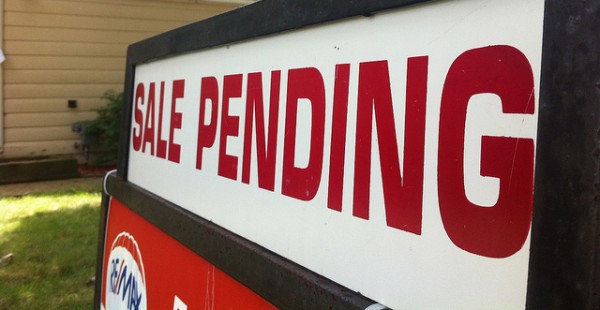Economic Snapshot: Existing home sales up 11.0 percent from 2015

Existing home sales saw a modest increase this month but saw double-digit gains year-over-year. However, new home sales fell this month.
Existing home sales
Existing home sales inched up 0.4 percent in January to a seasonally adjusted annual rate 5.47 million. Sales are now 11.0 percent higher than a year ago – the largest year-over-year gain since July 2013. Existing home sales were also at the highest annual rate in the past six months in January.
The median existing-home price for all housing types in January was $213,800, up 8.2 percent from January 2015. Total housing inventory at the end of January increased 3.4 percent to 1.82 million existing homes available for sale, but is still 2.2 percent below the previous year. Unsold inventory is at a supply of 4.0 months at the current sales pace, up slightly from 3.9 months in December.
The share of first-time buyers remained at 32 percent in January for the second consecutive month and is up from 28 percent last year. First-time buyers in all of 2015 represented an average of 30 percent, up from 29 percent in both 2014 and 2013.
New home sales
Sales of new single-family houses were at a seasonally adjusted annual rate of 494,000 in January. This is 9.2 percent below the revised December rate of 544,000 and is 5.2 percent below the January 2015 estimate of 521,000.
The median sales price of new houses sold in January was $278,800 and the average sales price was $365,700. The seasonally adjusted estimate of new houses for sale at the end of January was 238,000, which represents a supply of 5.8 months at the current sales rate.
Consumer confidence
The Consumer Confidence Index dropped from 97.8 in January to 92.2 in February. The Present Situation Index declined from 116.6 to 112.1 and the Expectations Index decreased from 85.3 to 78.9.
The percentage of consumers saying business conditions were “good” decreased from 27.7 percent to 26.0 percent. Those saying business conditions were “bad” increased from 18.8 percent to 19.8 percent. Consumers who claim jobs are “plentiful” decreased from 23.0 percent to 22.1 percent and those claiming jobs are “hard to get” increased from 23.6 percent to 24.2 percent.
The percentage of consumers expecting business conditions to improve over the next six months declined from 15.9 percent to 14.6 percent and those expecting conditions to worsen increased from 10.7 percent to 12.0 percent.
Consumers anticipating more jobs in the jobs ahead decreased from 13.4 percent to 12.2 percent and those anticipating fewer jobs increased slightly from 17.0 percent to 17.2 percent. The proportion of consumers expecting their incomes to increase declined from 18.6 percent to 17.2 percent and the proportion expecting a reduction in income increased from 10.7 percent to 12.5 percent.




